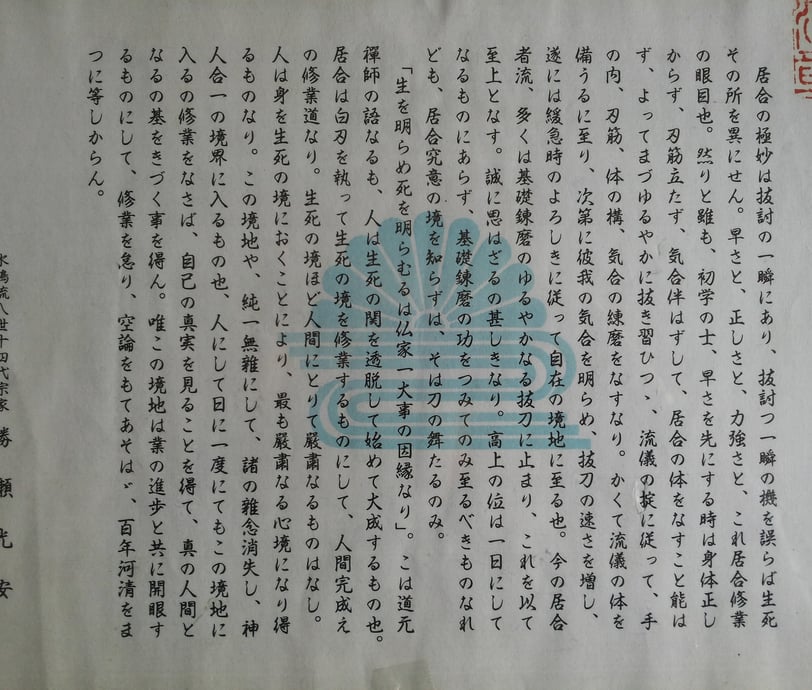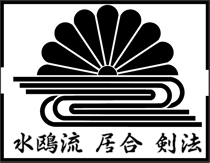Practice of Suiō-ryū
Growth can be defined as the enhancement of the individual through Budo. Becoming a slave to form kills the individual. The instructor must judge the individual and not detract their personalities from them. This ability to discern the difference is one of the most important points in training. - Katsuse Yoshimitsu Kagehiro, 15ª Soke
5/8/20242 min read


Suiō-ryū Iai Kenpō (水鷗流居合剣法) is one of the martial arts practiced during the age of the samurai and still preserved today. These traditions, now known as koryū (古流, classical schools), have been transmitted from generation to generation. The system has been practiced since the year 1615 and was intended to prepare the samurai to face real and varied combat situations, both on the battlefield and in daily life.
It is a sōgō bujutsu (総合武術), a comprehensive martial tradition that encompasses the handling of various weapons. Instruction is delivered in the traditional way, with personalized guidance in which each practitioner progresses at their own pace.
The discipline through which students are introduced to the school is iai kenpō (iaijutsu), which focuses on the use of the katana and techniques of rapid drawing. The goal is to develop the ability to react to unexpected danger by executing an offensive or defensive action in the same moment the sword leaves the scabbard. These techniques are taught through katas that are initially practiced individually and later combined and performed in pairs, allowing for the development of key elements such as distance, balance, rhythm, and speed.
As the practitioner progresses, they are gradually introduced to the use of other weapons. These include the jō (jōhō or jōjutsu, staff techniques against katana), the wakizashi (wakizashijutsu, the short sword every samurai carried), kogusoku (grappling techniques in armor for the battlefield), kenpō (kenjutsu, armored sword combat), naginata (naginatajutsu, pole weapon with a curved blade), tanjō (tanjōjutsu, short stick against katana), and tantō (tantōdori, knife defense).
In addition, since the 9th sōke, the Masaki-ryū Fukuhara-ha Kusarigamajutsu (正木流鎖鎌術) tradition has been transmitted alongside Suiō-ryū. This system teaches the use of the kusarigama, a weapon consisting of a sickle attached to a chain with a metal weight at the end, practiced against an opponent armed with a katana.
Despite the variety of its content, Suiō-ryū is based on a set of common principles and strategies that apply across all weapons and disciplines. This technical unity reflects the idea that a samurai could not always choose the circumstances in which they would have to fight or the weapons they would have available, and thus had to be prepared to apply these principles flexibly in any situation.
Sui O Ryu® y otros derivados del nombre están registrados. No está permitido su uso sin autorización.
